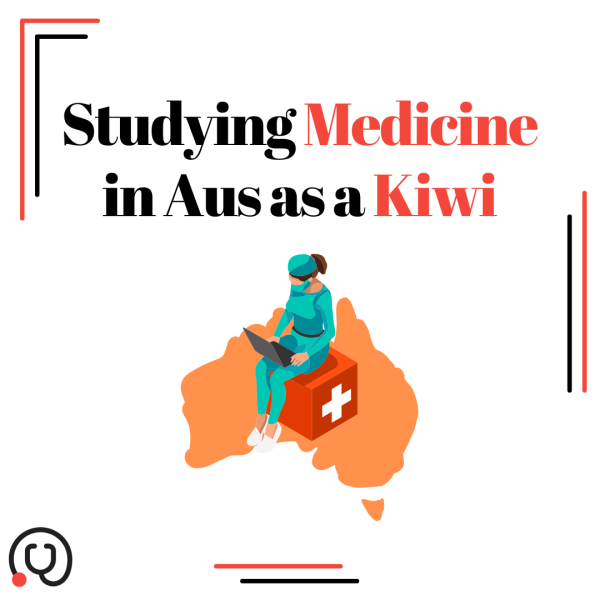Studying Medicine in Australia as a Kiwi

9 months ago by Chris
As a Kiwi, there are two domestic options for studying medicine or dentistry: at Auckland and Otago Universities. However, if you are open to looking overseas, studying medicine in Australia is a viable option with an enormous list of benefits. What’s more, there is a significant number of universities to choose from. While this may be intimidating, it provides you with the opportunity to apply to many universities, significantly boosting your chances of gaining entry into medicine.
Why Consider Australia?
There are several advantages to applying for medicine in Australia:
Direct Entry From High School
Australian medical schools allow students to enter medical programs straight from high school. On the other hand, at Auckland and Otago Universities, you will need to complete a first-year undergraduate degree at university to apply for medicine. Applying directly from high school allows you to skip all of the stress and competition of the undergraduate year, as well as the uncertainty of whether you will secure a spot into medicine.
More Opportunities
New Zealand has only two medical schools (Auckland and Otago), and you can only apply to one. Meanwhile. Australia has around 15+ medical schools you can apply to, significantly increasing your chances of getting accepted. Applying to many universities means a higher likelihood of securing a place in medicine.
Shorter Degree Duration
Medical degrees in Australia tend to be shorter. Most courses are five-year degrees, rather than the six-year degrees offered in New Zealand. This will have you graduating and entering the workforce earlier, giving you a head start in your medical career.
Lower Tuition Fees
As a Kiwi, you are considered a domestic student in Australia! That means you don’t need to pay the enormous international fees, and will graduate with much less debt compared to studying in other countries as an international student.
Flexible Career Pathways
After completing your medical training in Australia, you can work in either Australia or New Zealand without any additional barriers. This flexibility opens up more job opportunities and career options after graduation.
What do you need to do to apply for medicine in Australia?
- It is important to consider grades and subject requirements. Unlike in New Zealand, many Australian Universities have specific high school subject requirements when applying for medicine. These requirements can be found here.
- The second step to applying is planning to sit the UCAT early (in year 13). This is highly recommended regardless of whether you’re applying to Australia, New Zealand, or both. By taking the UCAT in year 13, you give yourself an extra opportunity to do exceedingly well, or to learn and improve, and you also open up the chance to apply to Australia. Most students do not realise they can sit UCAT in year 13!
- Before you apply to Australian universities, you need to obtain an ATAR (Australian Tertiary Admission Rank) equivalent score. Australia assigns high school students a comparative grade ranging from 0.00-99.95 called the ATAR. Each increment of 0.05 is awarded to 0.05% of students. Generally, if you are in the top 5% of your cohort in New Zealand, your ATAR should be adequate to be eligible at most Australian universities offering medicine. NZQA, on request, will calculate and provide you with your ATAR score. You will need to provide the Australian University that you apply to with your National Student Number (NSN), and check with your school that your Tertiary Release Indicator is set to “Yes”, so that the Universities can view your score. You can arrange this by reaching out to the administrators at your high school. The process is the same whether you have undertaken NCEA, IB, Cambridge or other exams.
- You then need to choose where to apply. MedEntry recommends applying to as many universities as possible, as this will increase your chances of securing a place in medical school. Each Australian medical school is different, and each has a slightly different entry process. Most require you to succeed in UCAT (which is weighted up to 33% or more of the admission criteria) and most also require you to succeed in an interview (also weighted significantly). The UCAT and interviews are much more important when applying to Australian universities, compared to Auckland or Otago university. You can gain detailed information on each university from our Australian university admissions guide. Each state has its own admission body that you must apply to (for example, VTAC for Victoria, UAC for New South Wales, TISC for Western Australia). The closing date for applying is usually the end of September each year. The process is outlined in detail in our blog.
Australia is a very promising option for New Zealand students, yet very few consider it, often because they are not aware of the advantages. Going overseas to study can seem like a significant step, but for the right student it can be an excellent opportunity.
Even if you don't get into a medical school in Australia, sitting the UCAT and attending interviews in year 13 provides great experience for you for the following year, significantly boosting your chances of gaining entry into medicine. There are no downsides here!
MedEntry can help you navigate through the process of applying to medical schools in Australia. MedEntry also offers UCAT Headstart packages for students who are interested in sitting UCAT in year 13.
Written by Thomas, a past MedEntry student who scored 99th percentile in UCAT.


